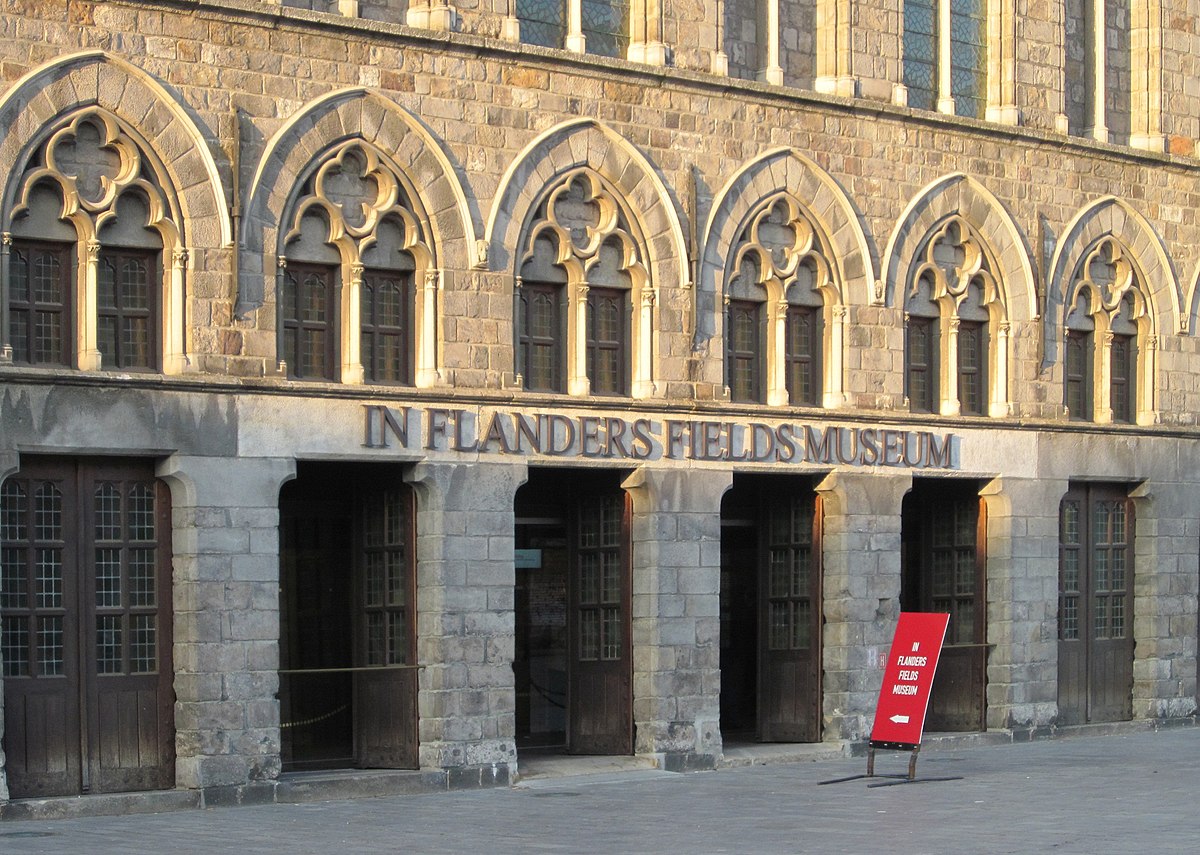In Belgium's Ypres, a museum draws a line from World War One to Ukraine
"Ukraine's 'martyr cities' like Mariupol, Bakhmut, Bucha makes one think of Leuven, Ypres and Passchendaele," Lodewyck said, listing names of the sites of the worst atrocities in Ukraine and World War One-era Belgium.

The massed ranks of empty chairs at the Belgian World War One exhibition - one for each country and region that sent soldiers to die here a century ago - have been replaced by just two to mark the new conflict raging on the continent.
One empty chair for Ukraine, one for Russia, commemorating those who will never return to their families in both lands. "Each chair is a symbol of the emptiness felt back at home," Stephen Lodewyck, director of the In Flanders Fields Museum in Ypres, said. "There are more parallels between World War One and the war in Ukraine than we would like there to be."
His museum first set up the massed chairs in 2018, to mark the centenary of the end of that war that had been supposed to end all wars. The chairs have been shifted around ever since as symbols of different casualties in the historic conflict. The new honed-down display draws a clear link to the present where Lodewyck keeps hearing echoes of the past.
In World War One, the warring parties faced off across trenches for years. In Ukraine, both sides are seen dug in for a long war of attrition. "It's almost absurd to be seeing similar trenches now in Ukraine," Lodewyck told Reuters.
MARTYR CITIES Century-old aerial footage in the museum's collection shows scorched fields, damaged villages and cities in Belgium.
Some of it is eerily close to the digital videos captured today by 21st century drones over Ukraine. "Ukraine's 'martyr cities' like Mariupol, Bakhmut, Bucha makes one think of Leuven, Ypres and Passchendaele," Lodewyck said, listing names of the sites of the worst atrocities in Ukraine and World War One-era Belgium. "And the mud everywhere."
Lodewyck is not the first to make the comparison. In a speech in March last year to the Belgian parliament, Ukrainian President Volodymyr Zelenskiy drew a parallel between the weeks-long siege of Mariupol and the Ypres battles in World War One. "More than 90% of all buildings in this city are completely destroyed by Russian strikes - aircraft, artillery, mortars, tanks. Thousands of peaceful Mariupol residents died. People are buried just in the city," Zelenskiy said.
The scenes were "no less appalling than you had near Ypres," Zelenskiy added. World War One's outcome and casualty count are set out in the history books. Ukraine's war dragged into its second year on Friday with no end in sight.
The exhibition in Ypres ends with a long list of armed conflicts from civil wars raging in the aftermath of World War One to World War Two to Syria. It was compiled before Russian President Vladimir Putin sent his troops over the border into Ukraine in what he called his "special military operation". The results of that decision are marked in the museum by the two empty chairs.
"There can never be anything good about a war," Lodewyck said. "The suffering of the people is paramount."
(This story has not been edited by Devdiscourse staff and is auto-generated from a syndicated feed.)
ALSO READ
Russia Foils Drone Attack on TurkStream Gas Pipeline
Russian Forces Thwart Drone Attack on TurkStream Pipeline
Belgium Paralyzed: Transport and Education Strike Over Pension Reforms
Historic Pact: Russia and Iran's Strategic Partnership
Russia and Iran Forge Strategic Partnership Amid Global Tensions










